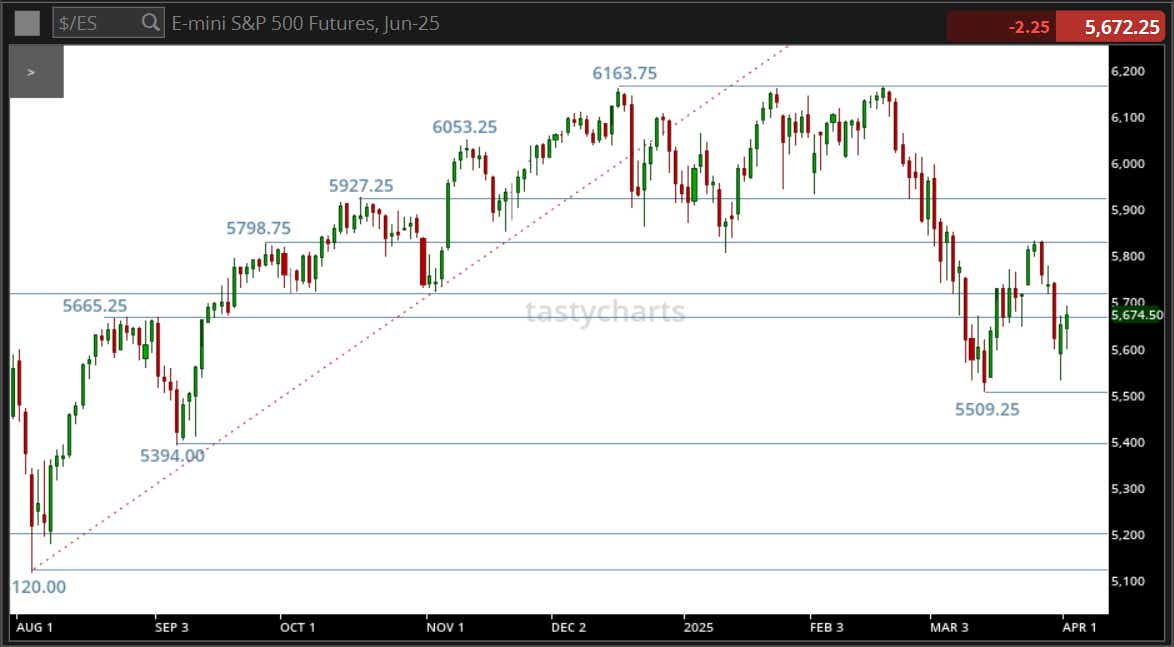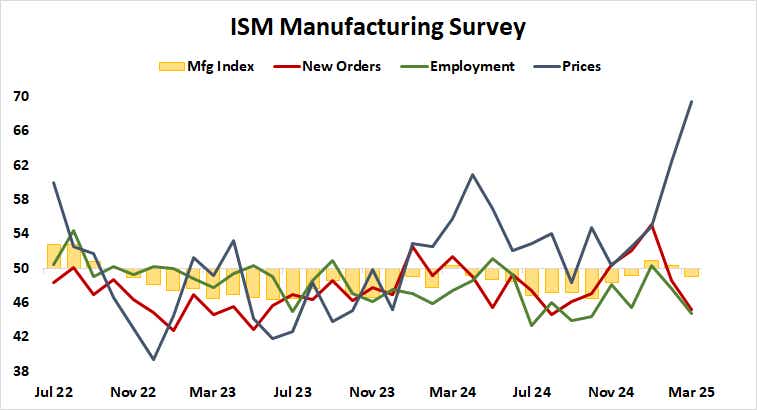Whatever Stocks Make of U.S. Liberation Day, Bonds May Go Higher

Whatever Stocks Make of U.S. Liberation Day, Bonds May Go Higher
By:Ilya Spivak
Whatever stocks do with U.S. “Liberation Day”, bond markets may rejoice
- All eyes are on “Liberation Day”, a big U.S. tariff policy announcement.
- ISM and S&P Global PMI data show manufacturing sentiment hurting.
- Bonds may rise as tariff drama feeds further Fed rate cut speculation .
The markets are on tenterhooks as they await the arrival of so-called “Liberation Day”, the name that U.S. President Donald Trump has assigned to his announcement of what could be a sweeping regime of various trade barriers. “Could be,” because less than 24 hours before the plan’s arrival, its contours remain worryingly opaque.
Mr. Trump has touted “reciprocal tariffs” as the centerpiece of his logic, meaning that he would like to mirror U.S. trading partners’ policies back at them. The president has clarified that if trade barriers facing U.S. exporters are of the non-tariff variety, like punitive regulations or quotas, then his intention is to reply in kind.
What does “Liberation Day” really mean for markets?
How all of this might look in practice is maddeningly confusing. The Economist estimates that going tariff-for-tariff with individual trade partners would amount to 2.3 million new levy rates. Trying to offset countries’ effective average tariff rates on U.S. imports may simplify things in some ways but calculating them will be a thorny process.

Moreover, it remains unclear whether these tariffs are intended as an inducement for negotiation with partners or as a long-term effort to remedy purportedly unfair trade imbalances. If it is the former, then whatever is announced this week may yet be subject to change. If recent reversals on Mexico and Canada are any guide, that change can be swift.
Uncertainty about the tariffs and fiscal policy more broadly began to spook financial markets in mid-February as business and consumer confidence surveys started to flash warning signs. March marked the worst month since December 2022 for the bellwether S&P 500 stock index. It fell 5.2%.
Bonds may rise as tariff drama boosts Fed rate cut speculation
Twin surveys measuring the U.S. manufacturing sector set the stage for the fateful “Liberation Day” reveal. Purchasing managers index (PMI) figures from the Institute of Supply Management (ISM) showed economic activity contracted in March for the first time in three months. An analog print from S&P Global was a bit better at near-standstill.

“Demand and production retreated, and de-staffing continued [as] companies responded to demand confusion [and] prices growth accelerated due to tariffs,” read the ISM report. “US manufacturing sector growth stalled in March,” added S&P Global, citing “uncertainty [linked to] concerns over tariff implementation and federal government policies.”
How stock markets react to what comes next probably hinges on how certain and long-lasting it appears. If something that can be durably extrapolated finally appears, sentiment may cautiously improve. If not, another selloff is probably in the cards. Either way, bonds may rise as hopes for offsetting Fed interest rate cuts swell.
Ilya Spivak, tastylive head of global macro, has 15 years of experience in trading strategy, and he specializes in identifying thematic moves in currencies, commodities, interest rates and equities. He hosts Macro Money and co-hosts Overtime, Monday-Thursday. @Ilyaspivak
For live daily programming, market news and commentary, visit tastylive or the YouTube channels tastylive (for options traders), and tastyliveTrending for stocks, futures, forex & macro.
Trade with a better broker, open a tastytrade account today. tastylive, Inc. and tastytrade, Inc. are separate but affiliated companies.
Options involve risk and are not suitable for all investors. Please read Characteristics and Risks of Standardized Options before deciding to invest in options.